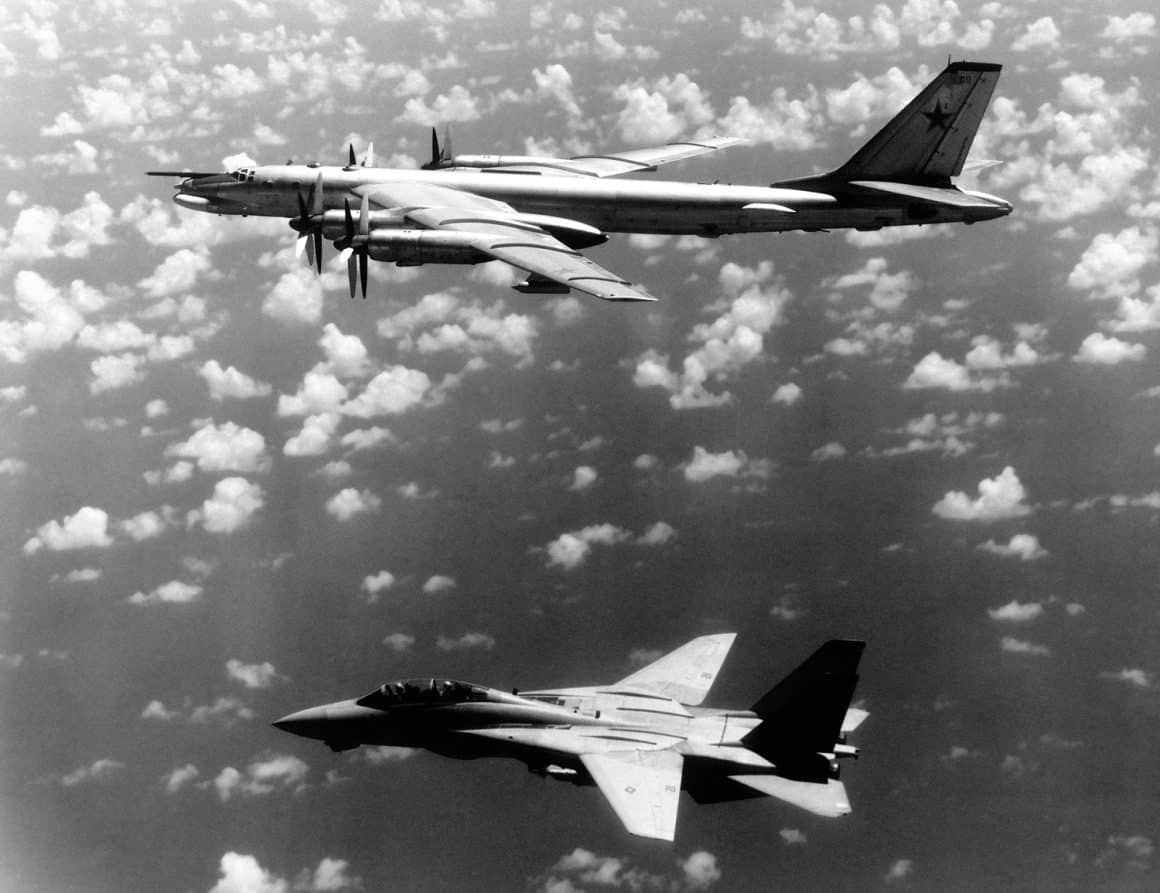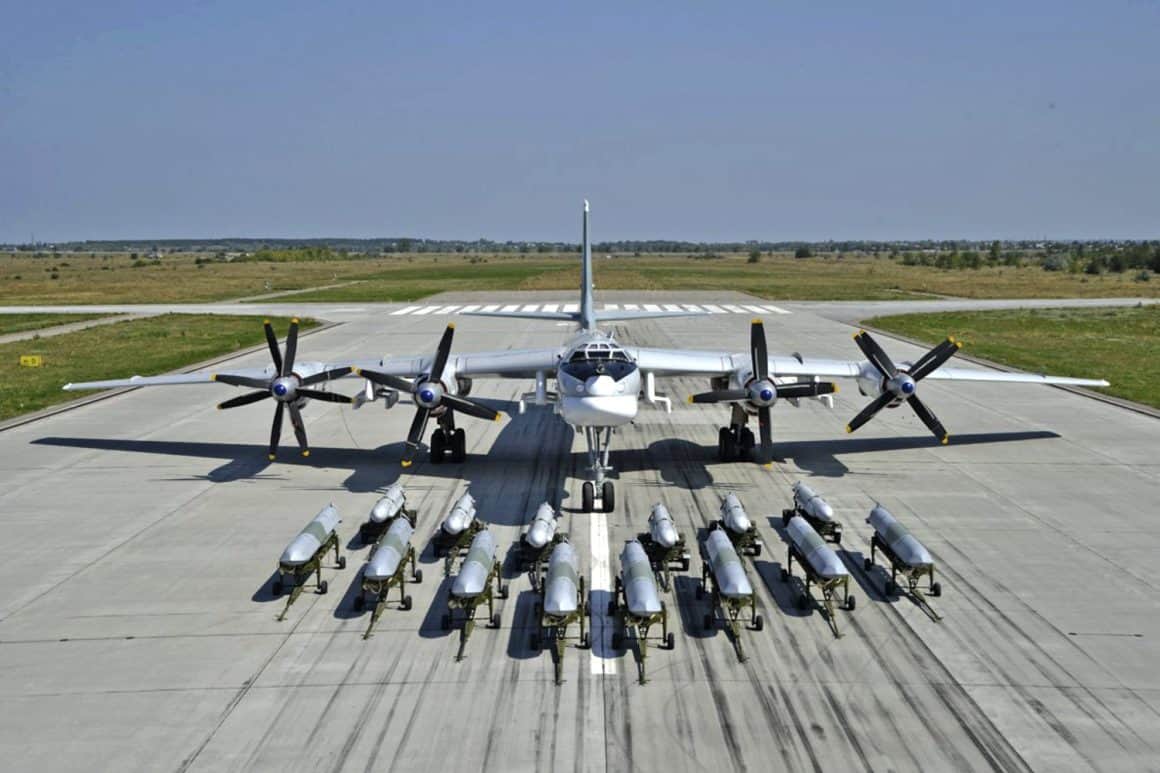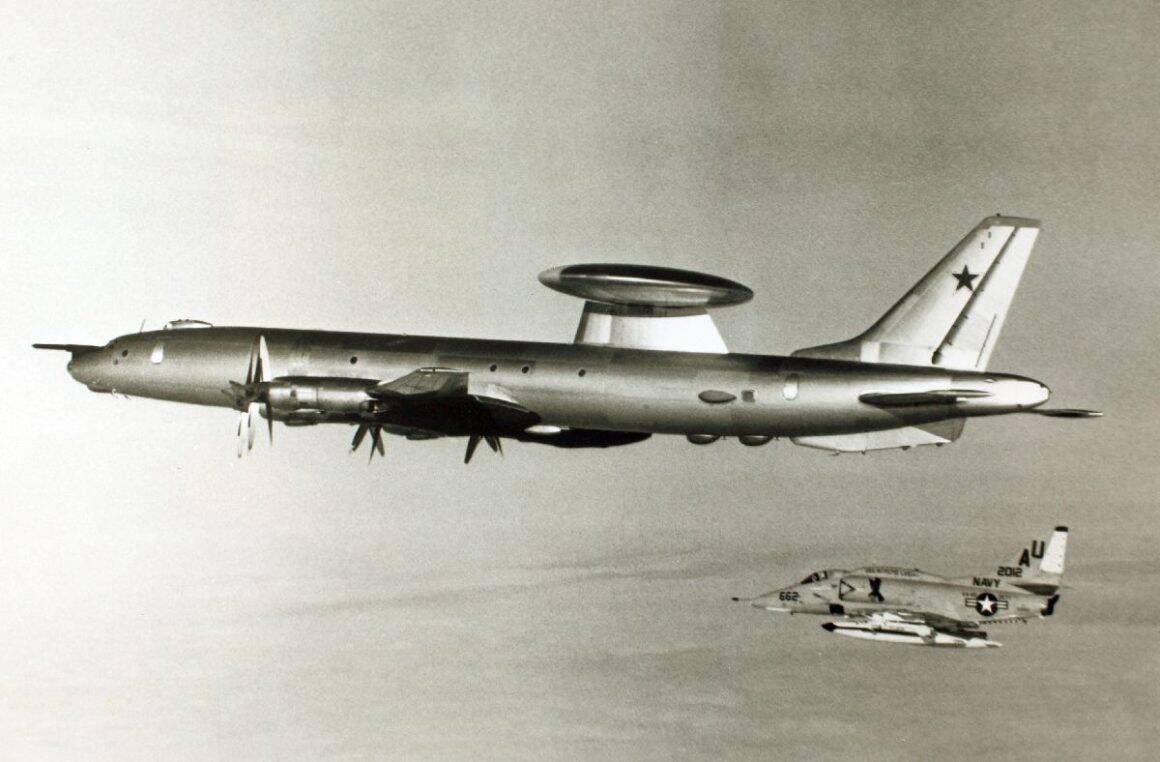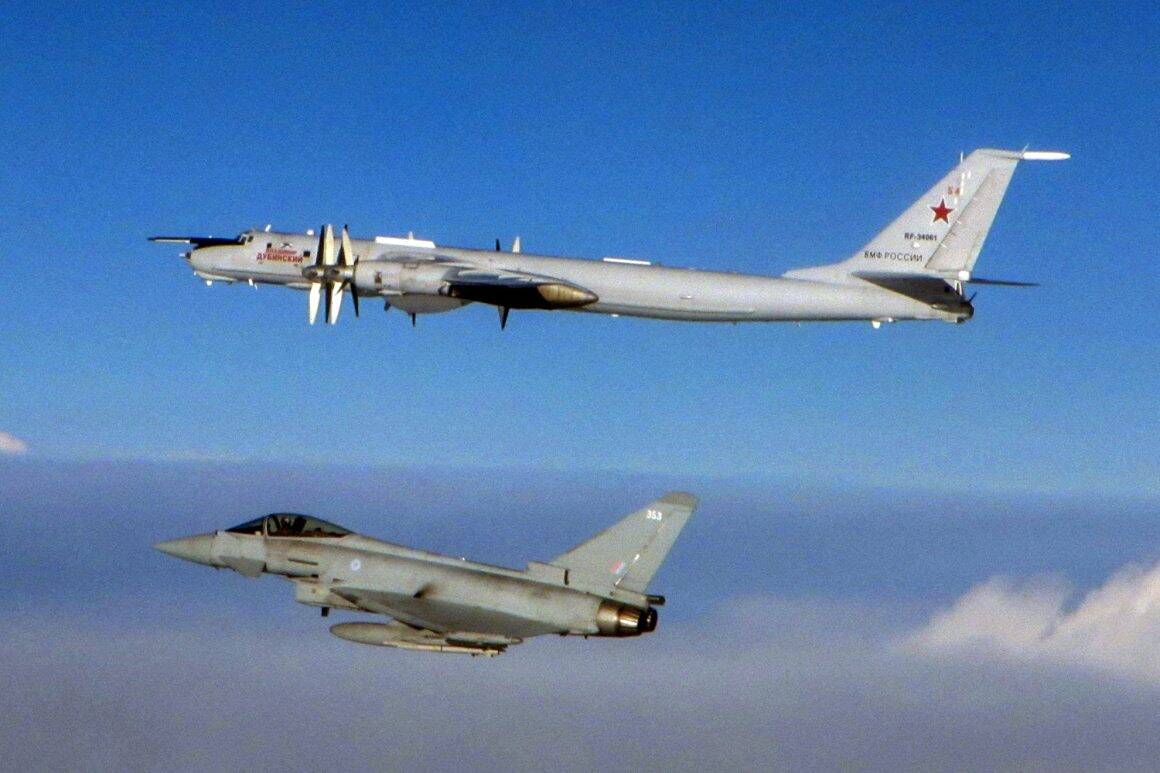Your author grew up in the 1980s, during the latter half of the Cold War. As a fledgling wingnut who craved imagery, some of the most fascinating photos he came across showed Tupolev Tu-95 Bear intercepts.
There was just something about seeing those big, lumbering, yet majestic bombers mingling with sleek jet fighters that caught the imagination.
With the end of the Cold War and fall of the Soviet Union, the Russkies got outta the harassment business. So intercepts came with less frequency, then seemed to stop altogether, and your author’s air-mindedness turned elsewhere.
The past decade-and-a-half has seen a resurgence of long-range ‘combat patrols’, as the Russians call them. The Tupelov Tu-95 came back to the forefront of my mind, and I began to wonder: how many Bears are still flying?

Eagles and Bears Playing Cat and Mouse
The USA and the former Soviet Union were constantly probing each other’s airspace, testing and evaluating the other’s defenses. Soviet aircraft also routinely shadowed US Navy assets across the globe.

On the Soviet side, there were numerous types involved in this aerial game of cat and mouse over the decades. Among them were the Tupolev Tu-16 ‘Badger’ and Tu-95/Tu-142 ‘Bear’, Ilyushin Il-38 ‘May’, and Myasishchev M-4 ‘Bison’.
In the myriad intercept photos I’d come across during the 1980s, ’twas the Bear which appeared more than any other. And it’s the same today.
The Tupolev Tu-95 Bear’s Combat Debut
Russia and the former Soviet Union have been involved in numerous conflicts since the Tu-95 came into service. And it probably was flying in support of some or all of them.

It’s interesting to note that the Tu-95’s combat debut didn’t come until the war in Syria began in 2015. Along with the Tu-160 Blackjack, the Tu-95 has flown hundreds of sorties, launching cruise missiles at ISIL targets.
How Many Bears Were Built?
Since the Tu-95 first flew back in 1952, apparently more than 500 have been constructed, though I’m unaware of the exact number. Production ran for four decades, coming to an end in 1993.
Most Bears were Tu-95s of various description. The majority were missile carriers, while others filled the reconnaissance and electronic warfare/surveillance roles.
The Tu-142 was a maritime reconnaissance variant that doubled as a sub-hunter. If you’re a Tom Clancy fan, this variant was portrayed in the film adaptation of ‘The Hunt For Red October’. About 100 Tu-142s were built.

In the late 1950s, an airliner derivative of the Bear was developed as the Tu-114, with 32 being constructed. Most were used by Aeroflot, but all have been retired as of 1991.
Two Tu-95s were also converted to carry passengers concurrent with the Tu-114. These were designated Tu-116.

Rounding out the Bear family is the Tu-126 ‘Moss’, an air early warning (AEW) variant based on the Tu-114. Twelve of these were constructed in the 1960s, and the last was retired in 1984.

So, How Many Bears Are Still Flying?
As of this writing in July of 2024, I dunno exactly how many Bears are still in the air. But the figures that I keep coming across are:
55 in 2020
60 in 2023
That includes some Tu-142s, as there have been a few intercepts of those made by the Brits over the last few years. The most recent was in August of 2023.

Since the Russian invasion of Ukraine began in February of 2022, at least one Tu-95 has been destroyed by a Ukrainian drone attack. At least three others were damaged. all at Engels Airbase near Saratov, Russia.

If current plans hold, the Tu-95 will remain in service with the Russian Air Force into the 2040s. Though how many will still be flying at that time is anyone’s guess.
